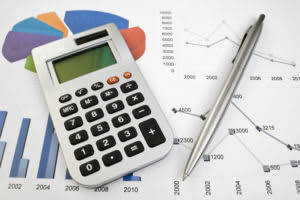
SG&A stands for Selling, General and Administrative expense and it basically covers every category of Cost of Goods Sold (COGS). Access and download collection of free Templates to help power your productivity and performance. If SG&A is a consolidated, one-line item, the analyst must use discretion to select one of these (or other) methods to account for all the various expenses baked into that one line item. For the past 52 years, Harold Averkamp (CPA, MBA) hasworked as an accounting supervisor, manager, consultant, university instructor, and innovator in teaching accounting online.
Services
Pricing strategy and labor costs affect this operating margin, and stakeholders can use the ratio to measure managerial flexibility and competency. In summary, the best way to determine whether an expense is an SG&A cost or a product cost is to examine its relationship to the production process and the company’s overall operations. This evaluation will help ensure that the expenses are classified accurately and in line with accounting principles and financial reporting standards. Overall, understanding SG&A expenses is an essential aspect of financial management and can help companies to make informed decisions and to achieve financial stability and growth. SG&A expenses can vary significantly from company to company, depending on the business’s size, industry, and nature. It can make it challenging to compare SG&A expenses between companies, and it’s important to consider other factors, such as revenue and operating income when comparing.
Tips for Controlling General and Administrative Costs
What’s more, nurturing existing customer relationships often costs less than acquiring new ones, so focus on loyalty programs and upselling initiatives. The second way to forecast SG&A Expense is by projecting it https://businesskreyol.com/2022/03/15/how-to-organize-receipts-for-business-a-step-by/ as a percentage of revenue. In practice, many large corporations budget their SG&A expenditures based on how much revenue the company will generate. For example, let’s say a company will generate $5,000 of revenue next year. If the company spends 20% of revenue on SG&A, then that implies $1,000 of SG&A Expense next year.
Rent and Utilities
- The costs of general office supplies, like stationery and printing materials, fall under this category.
- To better understand this line item, it helps to disaggregate SG&A into two parts.
- When it comes to managing the day-to-day operations of your business, having a solid understanding of your SG&A expenses is absolutely necessary.
- These costs are not directly related to sales or administration but are essential for maintaining the company’s infrastructure.
- Do you need all of that office space you’re currently using, or could you sublease some of it to another business?
- It tells you what percent of every dollar your company earned gets sucked up by SG&A costs.
Often, the objective of a company’s cost-reduction strategy is to lower costs in this category. These are the operational expenses incurred by a business to promote, sell, and deliver products or services and manage the overall organization. SG&A expenses are not directly tied to the production of goods or services and are separate from the company’s cost of goods sold (COGS). The report typically includes information about a company’s selling, general, and administrative expenses and is used to track the company’s spending on overhead costs.
Why don’t organizations include SG&A costs in their product costs?

It’s important to keep an eye on this cost month-to-month to assess the profitability and trends. For instance, a company may sometimes report selling expenses separate from G&A expenses if one is significantly higher than the other. It’s common to see the terms SG&A and operating expenses used to mean the same thing, but this is inaccurate since SG&A is only one type of operating expense.

Components of SG&A expenses
Types of expenses within SG&A include advertising, sales commissions, marketing, rent, utilities, management salaries, travel, meals, stationery, and more. In some cases, depending on the context, depreciation expense can also be included in SG&A. sg&a acronym To determine whether an expense is an SG&A cost or a product cost, evaluate the expense’s relationship to the production process.

Strategies to Optimize Selling Expenses
If the expense is directly related to producing a good or service, it is a product cost. If the expense supports the company’s overall operations but is not directly tied to the production process, it is an SG&A cost. Generally, SG&A expenses cannot be capitalized because they do not directly contribute to the creation of a long-term asset.
For smaller businesses, this level of detail might not be as critical, so lumping everything under one ‘SG&A’ or ‘Operating Expenses’ label suffices. Still, understanding the nuances can sharpen your financial analysis skills and give you better insight into how different Bookkeeping for Painters firms structure their costs. Fostering a culture of cost consciousness among your employees is yet another prudent strategy. After all, when everyone’s invested in the company’s financial health, small savings can add up to significant numbers. It is unlikely a successful business can sell its products and services without any selling activities. That’s because businesses need to inform customers of their existence and educate the customers about their products.
These are all the business costs that aren’t directly involved in making products or providing services—the day-to-day costs of keeping the lights on. You should approach selling, general, and administrative expenses (like marketing costs) as an investment because it can be a competitive advantage. Invest wisely, and get the right bang for your buck (in both operating expenses and production costs) so you can run your business efficiently and effectively. Understanding the difference between SG&A and Cost of Goods Sold (COGS) is fundamental to grasp the economics of a business.

Free Course: Understanding Financial Statements
This means that the Cost of Goods Sold should be around 10-20% of the total Revenue. Fascinatingly, this variance isn’t just by chance—industry norms, competitive dynamics, and customer acquisition costs all shape these figures. As such, a cross-industry comparison of SG&A can reveal strategic insights into how companies prioritize their spending and manage their operations.

